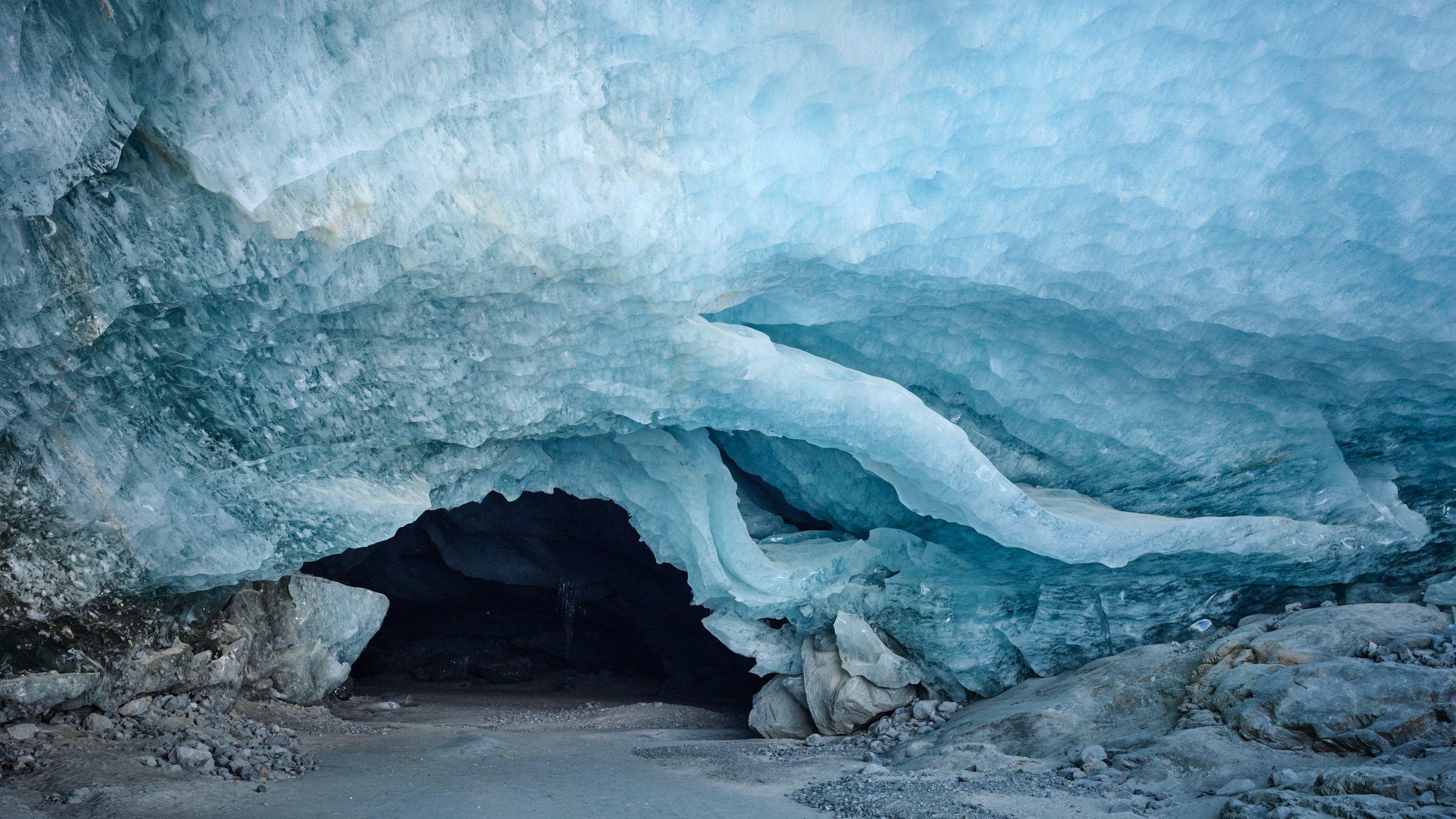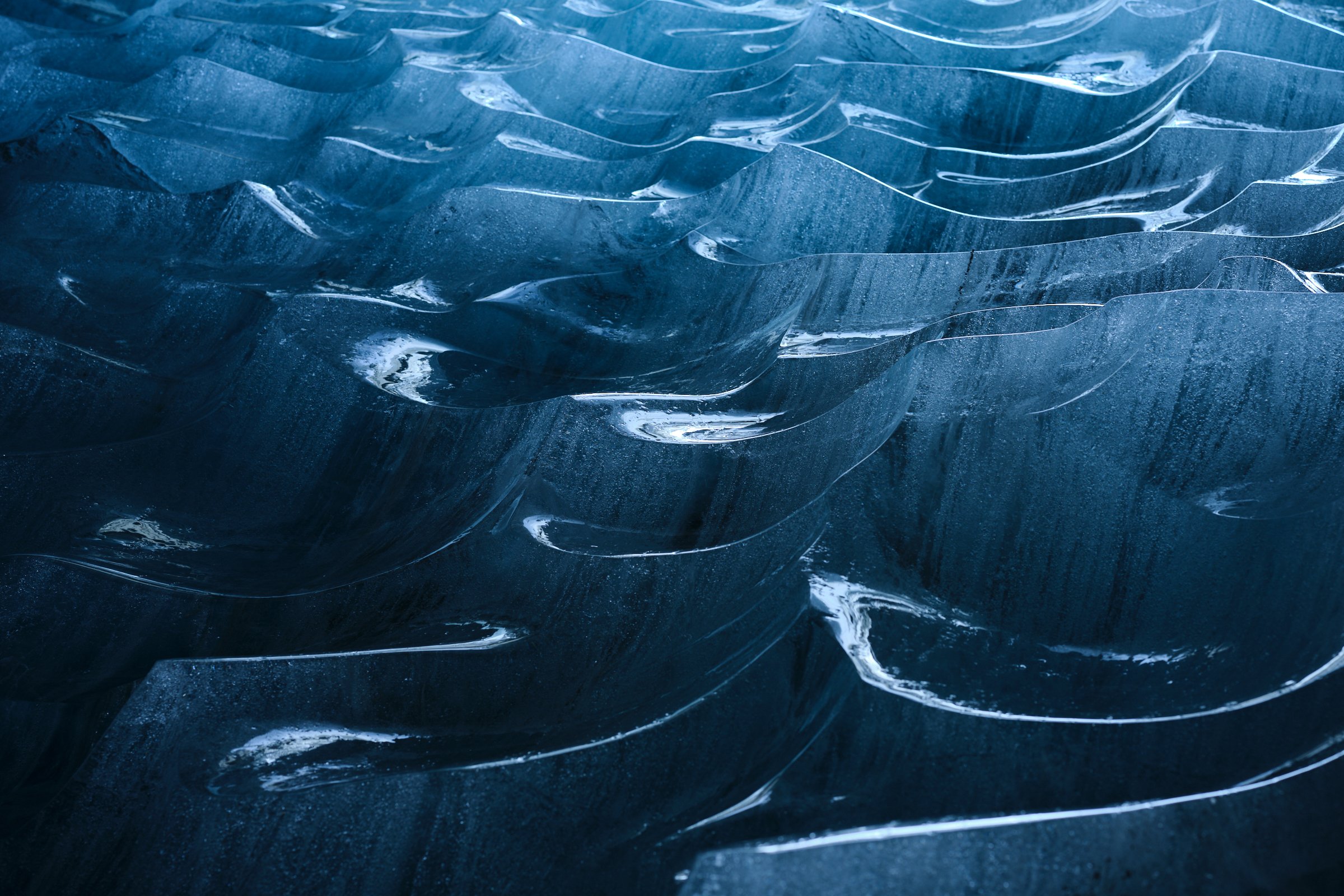Glacial Echoes – Echoes from Within the Glacier
A step into the blue-tinted twilight of an ice cave beneath the Morteratsch Glacier.
Inside the Ice Cathedral
When I entered the vast glacier cave, time seemed to stand still for a moment. All around me, countless natural sculptures made of ancient ice glowed with otherworldly light, arching high like the ceiling of a silent, colossal cathedral.
It is a rare privilege to step into the heart of a glacier. Such caves are fleeting, often difficult to access, and only form under very specific conditions.
With awe, I stood there, fully aware that I was face-to-face with ice that had formed nearly two thousand years ago.
Ancient Air – Silent Time Capsules
In the clear ice surrounding me, countless tiny bubbles are trapped, shimmering in the light reflected throughout the cave. These are ancient air bubbles – small pockets of Earth’s atmosphere from centuries past, perfectly preserved in the frozen archive of the glacier.
When snow once fell on these mountains and was gradually compressed into ice, it captured tiny fragments of air. Over time, these bubbles sank to the base of the glacier – the basal layer – and were sealed there more than a thousand years ago.
Each bubble is a silent time capsule from a world long gone, a tiny witness to history. I imagine how this air once drifted as wind through a forest – a breath from a past climate, now sleeping in the heart of the glacier.
It’s a humbling, almost poetic experience: in this frozen cave, I am literally touching time.
Fleeting Beauty in a Warming World
This ice chamber is breathtakingly beautiful – and at the same time, fleeting. A gentle reminder that the glacier is alive and constantly changing.
The cave I stand in exists only because the glacier has been retreating and thinning at its lower end – revealing secrets that had been hidden for centuries. Where steep, rocky terrain meets the ice, the glacier's forward movement has nearly come to a halt. The result is a hollow space beneath the glacier – an amphitheater of ice, exposed by the glacier’s retreat.
This process is a double-edged sword: climate change has allowed access to this wonder – and at the same time, it is the very reason for its impending destruction.
Just a few years ago, all of this was solid ice; today, it is an open cave – and in just a few years more, it will likely collapse and vanish.
I feel the tension between stillness and change. The air inside the cave is icy and perfectly still, as if time itself had paused.
It is a moment of silence in the midst of transformation – a fragile beauty on the brink of disappearance. And it is exactly this fragility that gives it such profound meaning.
Echoes Captured in Art
As a photographer who has been following alpine glaciers for more than a decade, I know how precious these moments are.
For years, I’ve enjoyed every opportunity to hike on a glacier – but nothing has moved me as deeply as the majesty of this ice cave.
Can I capture it in photographs that do justice to the glacier’s story?
In the resulting images, the shapes and textures inside the glacier appear almost like abstract art – some resemble wide mountain landscapes or waves of ice, though in reality, we are looking deep into the glacier’s core.
Each photograph in this series tells a story of transformation: from the silent fall of a snowflake centuries ago on a distant peak, to its slow journey through the ice, and finally to its melting and continuation as a young mountain stream – the Ova da Morteratsch – in the present day.
In times of dramatic climate change, these images stand as a quiet reminder of what we have, what we may lose – and what we must strive to protect.







